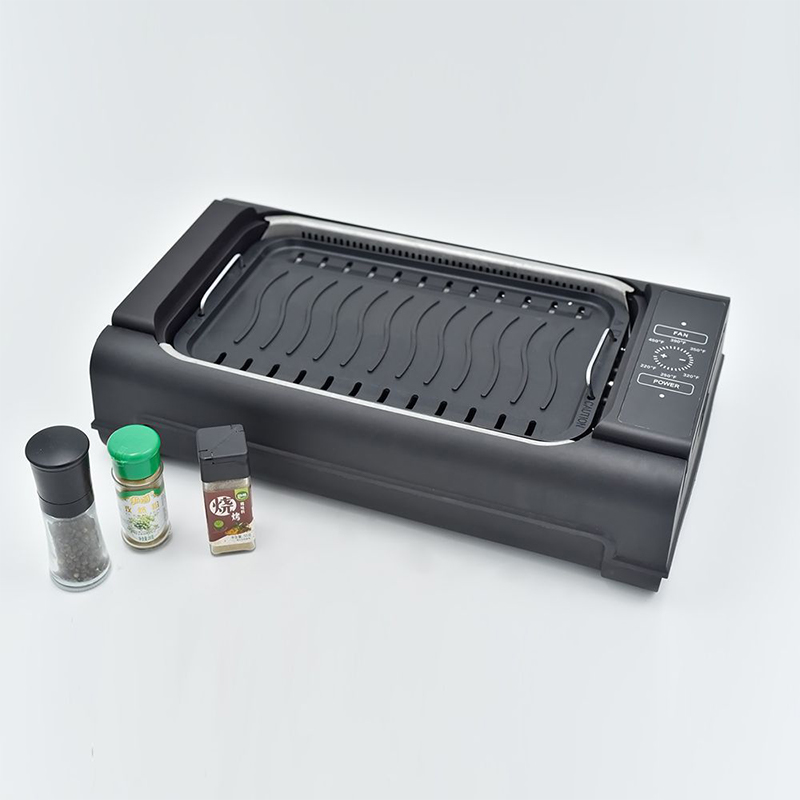Design of the Heating Element: The design intricacies of the heating element profoundly impact its ability to radiate heat evenly across the cooking surface. Elements engineered with precision, utilizing advanced technologies such as infrared or ceramic heating elements, maximize heat distribution efficiency. Factors like element size, shape, and arrangement within the grill chassis are meticulously optimized to ensure uniform heat dispersion. Innovative design features, such as heat reflectors or diffusers, may also be incorporated to enhance heat distribution consistency further.
Material and Thickness of the Cooking Surface: The choice of materials and their thickness directly influences heat conduction and distribution characteristics. High-quality materials like surgical-grade stainless steel, seasoned cast iron, or aerospace-grade aluminum are selected for their exceptional thermal conductivity properties. The thickness of the cooking surface is engineered to balance heat retention and distribution, with thicker surfaces offering superior thermal stability and more uniform heat spread. Advanced manufacturing techniques, such as precision laser cutting or die-casting, are employed to achieve optimal thickness uniformity and structural integrity.
Heat Retention Properties: The ability of the grill to retain heat is paramount for sustaining consistent cooking temperatures and minimizing heat fluctuations. Innovative insulation materials, such as heat-resistant ceramics or specialized thermal coatings, are integrated into the grill's construction to enhance heat retention capabilities. Design features like double-walled construction or insulated chambers create a thermal barrier, reducing heat loss and maintaining a stable cooking environment. These heat retention enhancements ensure that the grill surface remains uniformly heated, promoting even cooking results throughout the cooking process.
Airflow and Ventilation: Effective airflow management is critical for regulating heat distribution and preventing the formation of hot spots. Advanced airflow optimization techniques, including aerodynamic grill designs and strategically positioned ventilation openings, facilitate the smooth circulation of heated air across the cooking surface. Precision-engineered air channels and adjustable venting systems enable users to fine-tune airflow dynamics, ensuring optimal heat distribution control. Integrated fans or blower systems further augment airflow management, promoting consistent heat dispersion and eliminating stagnant air pockets that may lead to uneven cooking.
Size and Shape of the Grill: The size and geometry of the grill influence heat distribution dynamics and cooking performance. Extensive computational modeling and empirical testing are employed to optimize grill dimensions for uniform heat distribution across the entire cooking surface. Ergonomic design considerations ensure that heat distribution remains consistent even at the grill's periphery, catering to diverse cooking requirements. Innovative grill shapes, such as convex or concave surfaces, may be explored to further enhance heat distribution uniformity and culinary versatility.
Temperature Control: Precise temperature control mechanisms empower users to tailor the cooking environment to specific culinary needs, ensuring optimal heat distribution and cooking outcomes. Advanced temperature regulation systems, incorporating digital thermostats or PID controllers, offer precise temperature adjustments with minimal fluctuations. User-friendly interfaces and intuitive control panels provide effortless temperature management, allowing users to achieve consistent cooking results with ease. Temperature monitoring sensors and feedback loops enable real-time adjustments to maintain desired cooking temperatures, further enhancing heat distribution uniformity and culinary precision.
Smokeless Grill With Digital Control Panel



 English
English 中文简体
中文简体 English
English 中文简体
中文简体












